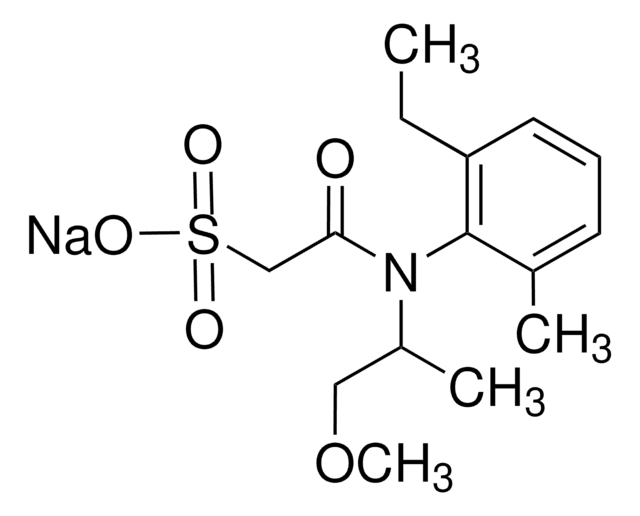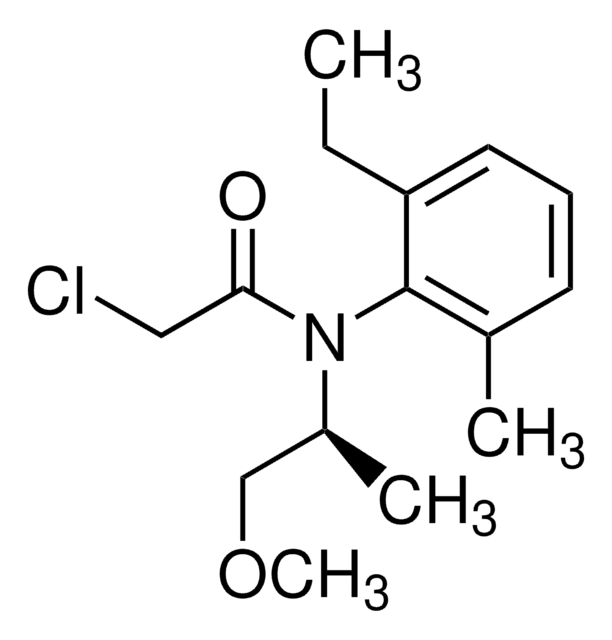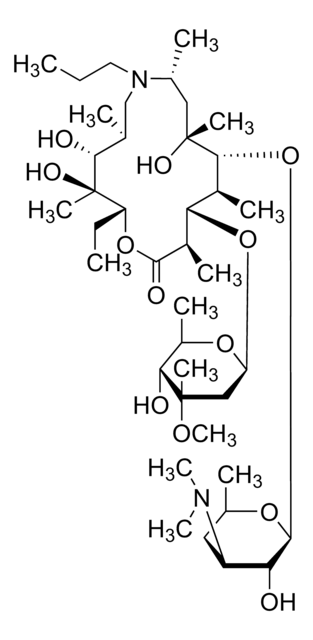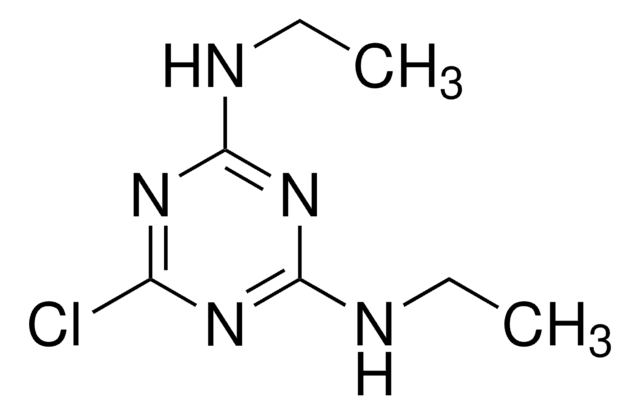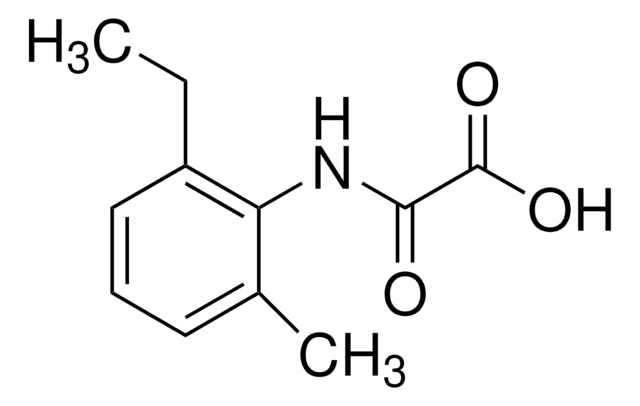34148
Metolachlor OA
PESTANAL®, analytical standard
Synonym(s):
BSTFA, TMCS, N-(2-Ethyl-6-methylphenyl)-N-(2-methoxy-1-methylethyl)oxalamic acid, [(2-Ethyl-6-methylphenyl)(2-methoxy-1-methylethyl)amino]oxo-acetic acid
About This Item
Recommended Products
grade
analytical standard
Quality Level
product line
PESTANAL®
shelf life
limited shelf life, expiry date on the label
reaction suitability
reagent type: derivatization reagent
reaction type: Silylations
technique(s)
HPLC: suitable
gas chromatography (GC): suitable
application(s)
agriculture
environmental
format
neat
SMILES string
CCc1cccc(C)c1N(C(C)COC)C(=O)C(O)=O
InChI
1S/C15H21NO4/c1-5-12-8-6-7-10(2)13(12)16(11(3)9-20-4)14(17)15(18)19/h6-8,11H,5,9H2,1-4H3,(H,18,19)
InChI key
LNOOSYCKMKZOJB-UHFFFAOYSA-N
Related Categories
General description
Application
Other Notes
Recommended products
Legal Information
Storage Class Code
11 - Combustible Solids
WGK
WGK 3
Flash Point(F)
Not applicable
Flash Point(C)
Not applicable
Personal Protective Equipment
Choose from one of the most recent versions:
Already Own This Product?
Find documentation for the products that you have recently purchased in the Document Library.
Customers Also Viewed
Our team of scientists has experience in all areas of research including Life Science, Material Science, Chemical Synthesis, Chromatography, Analytical and many others.
Contact Technical Service